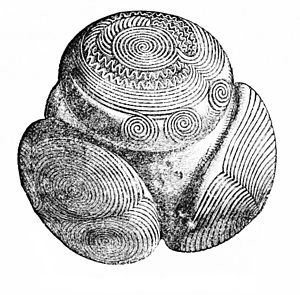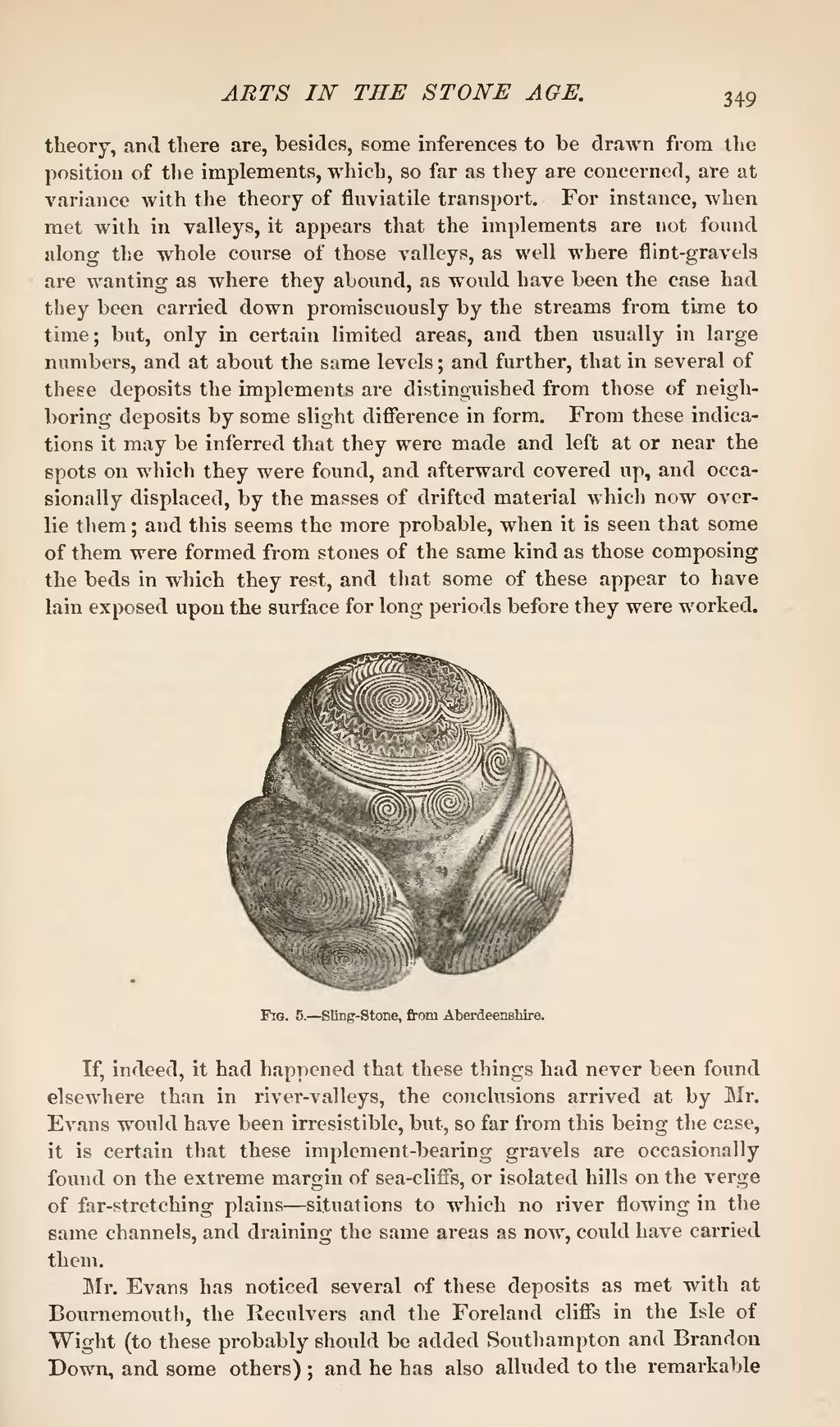theory, and there are, besides, some inferences to be drawn from the position of the implements, which, so far as they are concerned, are at variance with the theory of fluviatal transport. For instance, when met with in valleys, it appears that the implements are not found along the whole course of those valleys, as well where flint-gravels are wanting as where they abound, as would have been the case had they been carried down promiscuously by the streams from time to time; but, only in certain limited areas, and then usually in large numbers, and at about the same levels; and further, that in several of these deposits the implements are distinguished from those of neighboring deposits by some slight difference in form. From these indications it may be inferred that they were made and left at or near the spots on which they were found, and afterward covered up, and occasionally displaced, by the masses of drifted material which now overlie them; and this seems the more probable, when it is seen that some of them were formed from stones of the same kind as those composing the beds in which they rest, and that some of these appear to have lain exposed upon the surface for long periods before they were worked.

Fig. 5.—Sling-Stone, from Aberdeenshire.
If, indeed, it had happened that these things had never been found elsewhere than in river-valleys, the conclusions arrived at by Mr. Evans would have been irresistible, but, so far from this being the case, it is certain that these implement-bearing gravels are occasionally found on the extreme margin of sea-cliffs, or isolated hills on the verge of far-stretching plains—situations to which no river flowing in the same channels, and draining the same areas as now, could have carried them.
Mr. Evans has noticed several of these deposits as met with at Bournemouth, the Reculvers and the Foreland cliffs in the Isle of Wight (to these probably should be added Southampton and Brandon Down, and some others); and he has also alluded to the remarkable
